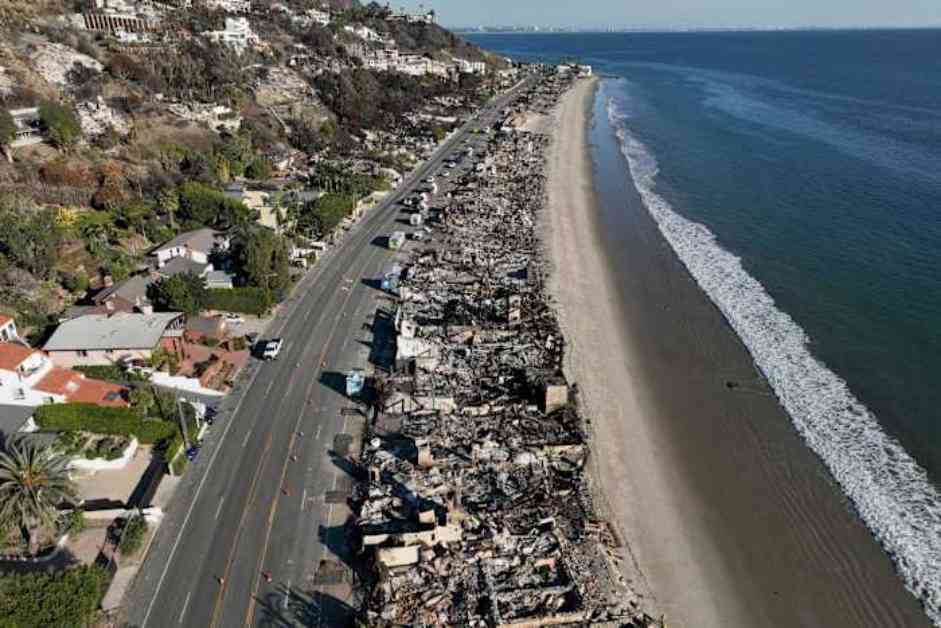The recent wildfires that ravaged the Los Angeles region have left a trail of devastation, not only on land but also in the ocean. As cleanup crews work tirelessly to remove hazardous materials from the burnt areas, researchers and officials are racing against time to understand the impact of the fires on the sea. The Palisades and Eaton fires destroyed thousands of homes, businesses, and personal belongings, turning them into toxic ash laden with harmful substances such as pesticides, asbestos, and heavy metals.
Tracy Quinn, the president and CEO of Heal the Bay, recently took a somber drive down the Pacific Coast Highway to witness the aftermath of the Palisades Fire. She described a scene of desolation where the water’s edge was tainted with ash, debris from burnt appliances littered the shoreline, and waves carried potentially toxic materials back into the ocean. It was a heartbreaking sight that underscored the urgent need to address the environmental repercussions of the wildfires.
Concerns for Ocean Contamination
One of the primary concerns arising from the wildfires is the contamination of the ocean water. The Surfrider Foundation’s water quality manager, Mara Dias, expressed worries about the impact of smoke and ash settling at sea, potentially endangering marine life and posing risks to human health. Researchers aboard a research vessel during the fires detected ash and waste up to 100 miles offshore, highlighting the far-reaching consequences of the wildfires on ocean ecosystems.
Rainfall exacerbates the situation by picking up contaminants and trash from the burnt areas and carrying them into the sea through drains and rivers. Chemicals, heavy metals, and other hazardous substances leach into the water, creating a toxic brew that threatens marine organisms and human safety. The recent mudslides and debris flows in the Palisades Fire burn zone have added to the concerns, as they can introduce more hazardous waste into the ocean and exacerbate the pollution problem.
Long-Term Implications and Research Efforts
As cleanup efforts continue and officials implement measures to prevent further contamination, scientists are focusing on understanding the long-term implications of the wildfires on the marine environment. Marine ecologist Julie Dinasquet from the University of California, San Diego’s Scripps Institution of Oceanography highlighted the need to investigate how far toxic ash and debris have dispersed, how deeply they have sunk, and where they will ultimately end up.
The presence of lead, asbestos, and other harmful substances in the ash poses a significant threat to marine organisms and the broader ecosystem. Researchers are planning to conduct tests on fish tissue to determine the presence of heavy metals and contaminants, shedding light on how the wildfires may impact the food chain. The ocean, already a repository of land-based pollution, faces an even greater challenge in dealing with the aftermath of the fires and other environmental disasters.
In conclusion, the wildfires that devastated the Los Angeles region have not only left a scar on the land but also raised significant concerns about the health of the ocean. As researchers, officials, and environmental organizations work together to address the environmental fallout from the fires, the need for sustained monitoring, research, and mitigation efforts becomes increasingly evident. The future of the marine ecosystem and our food supply hinges on our ability to understand and respond to the challenges posed by urban coastal fires and their impact on the ocean.















